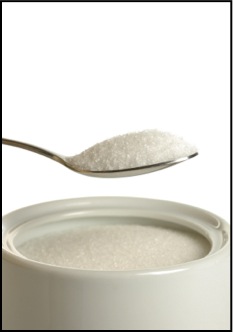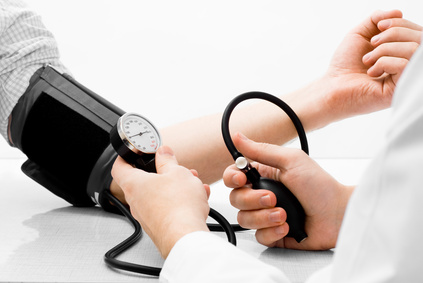Mitral Valve Prolapse
 Mitral valve prolapse (MVP) or “click murmur syndrome” is the most common heart valve abnormality, affecting 5-10 percent of the world population. MVP is a common condition associated with fibromyalgia. A normal mitral valve consists of two thin leaflets, located between the left atrium and the left ventricle of the heart. Mitral valve leaflets, shaped like parachutes, are attached to the inner wall of the left ventricle by a series of strings called chordae. When the ventricles contract and the mitral valve leaflets close snugly and prevent the backflow of blood from the left ventricle into the left atrium. When the ventricles relax, the valves open to allow oxygenated blood from the lungs to fill the left ventricle.
Mitral valve prolapse (MVP) or “click murmur syndrome” is the most common heart valve abnormality, affecting 5-10 percent of the world population. MVP is a common condition associated with fibromyalgia. A normal mitral valve consists of two thin leaflets, located between the left atrium and the left ventricle of the heart. Mitral valve leaflets, shaped like parachutes, are attached to the inner wall of the left ventricle by a series of strings called chordae. When the ventricles contract and the mitral valve leaflets close snugly and prevent the backflow of blood from the left ventricle into the left atrium. When the ventricles relax, the valves open to allow oxygenated blood from the lungs to fill the left ventricle.
In patients with mitral valve prolapse, the ventricles contract, the redundant leaflets prolapse (flop backwards) into the left atrium, sometimes allowing leakage of blood through the valve opening (mitral regurgitation). In Severe cases, mitral regurgitation can lead and abnormal heart rhythms. Most patients are totally unaware of the prolapsing of the mitral valve. Others may experience a number of symptoms. Fatigue is the most common complaint, although the reason for fatigue is not understood. Patients with mitral valve prolapse may have imbalances in their autonomic nervous system, which regulates heart rate and breathing. Such imbalances may cause inadequate blood oxygen delivery to the working muscles during exercise, thereby causing fatigue.
Palpitations are sensations of fast or irregular heart beats. In most patients with mitral valve prolapse, palpitations are harmless. In very rare cases, potentially serious heart rhythm abnormalities may underlie palpitations, which require further evaluation and treatment. Sharp chest pains are reported in some patients with mitral valve prolapse, which can be prolonged.
Conventional Medical Treatment for MVP
Beta-blockers, such as Inderal (propranolol); Lorpressor, Torprol (metoprolol), and Tenormin (atenolol) are used for long-term management of mitral valve prolapse (MVP).
These drugs slow the heart rate, which reduces cardiac output and leads to low blood pressure and fatigue. The brain and muscles then aren’t getting enough blood and oxygen, which can lead to fuzzy thinking, poor memory, depression, anxiety, and fatigue. Fatigue and depression are perhaps the two most common side effects. These drugs also deplete the body’s natural sleep hormone melatonin. Low melatonin leads to poor sleep, obesity, fatigue, and decreased life span.
![]()
The greatest discovery of my generation is that human beings can alter their lives by altering their attitudes of mind.
– William James
![]()
Safe and Effective Nutritional Therapy for Treating MVP
In my experience, the best way to stop the symptoms associated with heart irregularities, including MVP, is to correct the underlying nutritional deficiencies. The first place to start is with a good multivitamin like the Essential Therapeutics CFS/Fibro Formula which contains the key nutrients to help regulate the systems of the body, including heart rate.
Magnesium is especially important. Magnesium is a natural sedative that relaxes muscles, and the heart is, of course, mostly muscle. The smooth muscle contained in the blood vessel lining is also dependent on magnesium. Magnesium acts like a beta-blocker (without the side effects) by inhibiting stimulatory hormones including norepinephrine and epinephrine (hormones that increase heart rate). Fortunately, magnesium doesn’t cause fatigue or the other symptoms associated with prescription beta-blockers.
 The more magnesium found within a muscle cell, the more relaxed the muscle becomes. And a relaxed heart is a happy heart. Studies show that those with mitral valve prolapse (MVP) are deficient in magnesium. Others show that magnesium reduces the symptoms of MVP, including palpitations, chest pain, and fatigue.
The more magnesium found within a muscle cell, the more relaxed the muscle becomes. And a relaxed heart is a happy heart. Studies show that those with mitral valve prolapse (MVP) are deficient in magnesium. Others show that magnesium reduces the symptoms of MVP, including palpitations, chest pain, and fatigue.
Dozens of research papers have been written on how a magnesium deficiency can trigger arterial spasms, as well as muscle spasms. These spasms may be felt as chest pain, constipation, restless leg syndrome or leg cramps, headaches, eye twitching, or TIAs (transient ischemic attacks). The RDA for magnesium is 400mg a day. The estimated intake in the United States is 300mg a day, even less for those with fibromyalgia.
Magnesium is depleted by stress. The more stress a person is under, the more magnesium they need, use up and eventually deplete. But studies show as much as three times this amount, or 900mg, may be needed by the general population, especially by those predisposed to cardiac disease.
Do you have Headaches, Constipation, High Blood Pressure, Chronic Muscle Aches or Tightness, Restless Leg Syndrome, Leg Cramps, Low Moods, and/or MVP? If so, you may be deficient in magnesium.
Are you taking a good high-dose multivitamin/mineral supplement, yet still have problems with achy muscles or constipation? Is so, just add 150mg of magnesium at dinner. If you don’t have a normal bowel movement (BM) the next day, add another magnesium tablet and keep increasing each day until you have normal BM. If you take too much magnesium, you’ll have a loose BM – simply reduce the dose. Please visit our online store to see all of the multivitamins we offer.
![]()
For Stubborn MVP, Add CoQ10
CoQ10 is a valuable nutrient for reversing MVP symptoms. The heart muscles need large amounts of CoQ10 for optimal function. Several studies have demonstrated that it can return heart function to normal. Patients need to take a minimum of 100mg indefinitely, as symptoms will usually return within 2 years of discontinuing therapy.
An optimist sees an opportunity in every calamity: a pessimist sees a calamity in every opportunity.
– Winston Churchill
![]()
Mediterranean Diet Best for Diabetes
 Research now suggests that by following a low-carbohydrate Mediterranean diet rather than a low-fat diet, newly diagnosed diabetic patients may postpone the need for drugs to control this disease, a study suggests.
Research now suggests that by following a low-carbohydrate Mediterranean diet rather than a low-fat diet, newly diagnosed diabetic patients may postpone the need for drugs to control this disease, a study suggests.
After four years, only 44 percent of newly diagnosed diabetic patients on a Mediterranean diet versus 70 percent of those on a low-fat diet required drug therapy as well as diet to control their diabetes. Patients on the Mediterranean diet also showed greater improvement in some cardiovascular risk factors.
A Mediterranean diet includes lots of vegetables and whole grains with little red meat but with poultry and fish instead, where < 50 percent of calories were from complex carbohydrates and > 30 percent of calories were from fat, largely olive oil.
The study, by Dr Katherine Esposito (Second University of Naples, Naples, Italy) and colleagues, was published in the September 1, 2009 issue of the Annals of Internal Medicine.
![]()
What You Should Know About Sugar
There are four classes of simple sugars. They include sucrose (table sugar), fructose (fruit sugar), honey, and malts. Obviously whole fruits are a healthy choice. Fruit juices, on the other hand, are like mainlining sugar; it’s too much sugar at one time. Think about it this way: you’d have a hard time eating ten apples, but you could easily drink a glass of apple juice, which may contain up to 10 “juiced” apples.
Too much sugar, no matter if it’s fruit juice, honey, maple syrup, fructose (fruit sugar), evaporated cane juice, brown sugar, or white table sugar is not a healthy choice. Sugar depletes the body of B vitamins, calcium, and magnesium. Three ounces of sugar, in any form – sucrose (table sugar), honey, or fruit juice, results in a 50 percent reduction in white blood cell activity for up to five hours. Sugar lowers our immune function!
The average American consumes over 150 ounces of sugar a day. A can of Coke has 9-10 teaspoons of sugar. Sugar has a number of other extremely damaging effects on the human body.
TOO Much Sugar? Sugar Can …
 – Suppress the immune system.
– Suppress the immune system.
– Contribute to mood disorders (i.e. hyperactivity, anxiety, depression, and concentration difficulties) especially in children.
– Produce a significant rise in triglycerides.
– Cause drowsiness and decreased activity in children.
– Cause symptoms associated with ADHD, especially in children.
– Reduce helpful high-density cholesterol (HDLs).
– Promote an elevation of harmful cholesterol (LDLs).
– Cause hypoglycemia (low blood sugar).
– Contribute to kidney damage.
– Increase the risk of coronary heart disease.
– Lead to chromium deficiency.
– Cause copper deficiency.
– Interfere with absorption of calcium and magnesium.
– Upset the body’s mineral balance.
– Promote tooth decay.
– Raise adrenaline levels in children.
– Lead to periodontal disease.
– Speed the aging process, causing wrinkles and gray hair.
– Increase total cholesterol.
– Contribute to weight gain and obesity.
– Increase the risk of Crohn’s disease and ulcerative colitis.
– Contribute to diabetes.
– Contribute to osteoporosis.
– Increase systolic blood pressure.
– Cause free-radical formation in the bloodstream.
– Cause atherosclerosis.
– Cause depression.
– Increase the body’s fluid retention.
– Cause hormonal imbalance.
Ok, I think I’ve made my point. An occasional sweet treat is acceptable and encouraged. Moderation is the key. There’s no reason to totally abstain (unless you’re fighting off an infection, have yeast overgrowth, or are battling diabetes); just go easy and limit your sweets.
![]()
Lower Your Blood Pressure With the DASH Diet
What you eat affects your chances of developing high blood pressure (hypertension). Research shows that high blood pressure can be prevented — and lowered — by following the Dietary Approaches to Stop Hypertension (DASH) eating plan, which includes eating less salt and sodium.

High blood pressure, which is blood pressure higher than 140/90mmHg, affects more than 65 million — or one out of every three — American adults. Another 59 million Americans have prehypertension, which is blood pressure between 120/80 and 140/89mmHg. This increases their chances of developing high blood pressure and its complications. High blood pressure is dangerous because it makes your heart work too hard, hardens the walls of your arteries, and can cause the brain to hemorrhage or the kidneys to function poorly or not at all. If not controlled, high blood pressure can lead to heart and kidney disease, stroke, and blindness.
But high blood pressure can be prevented — and lowered — if you take these steps:
- Follow a healthy eating plan, such as DASH, that includes foods lower in salt and sodium.
- Maintain a healthy weight.
- Be moderately physically active for at least 30 minutes on most days of the week.
- If you drink alcoholic beverages, do so in moderation.
- If you already have high blood pressure and your doctor has prescribed medicine, take your medicine as directed and also follow these steps.
The DASH Eating Plan
The DASH eating plan is rich in fruits, vegetables, fat-free or low-fat milk and milk products, whole grains, fish, poultry, beans, seeds, and nuts. It also contains less salt and sodium; sweets, added sugars, and sugar-containing beverages; fats; and red meats than the typical American diet. This heart-healthy way of eating is also lower in saturated fat, trans fat, and cholesterol, and rich in nutrients that are associated with lowering blood pressure — mainly potassium, magnesium, calcium, protein, and fiber.
![]()
Brown Sugar
It is often said that brown sugar is a healthier option than white sugar. But you can chalk that up to clever marketing. In reality, brown sugar is most often ordinary table sugar that is turned brown by the reintroduction of molasses. Normally, molasses is separated and removed when sugar is created from sugarcane plants.
In some cases, brown sugar — particularly when it is referred to as “raw sugar” — is merely sugar that has not been fully refined. But more often than not, manufacturers prefer to reintroduce molasses to fine white sugar — creating a mixture with about 5-10 percent molasses — because it allows them to better control the color and size of the crystals in the final product.
Because of its molasses content, brown sugar does contain certain minerals, most notably calcium, potassium, iron, and magnesium (white sugar contains none of these). But since these minerals are present in only minuscule amounts, there is no real health benefit to using brown sugar.
I count him braver who overcomes his desires than him who conquers his enemies; for the hardest victory is the victory over self.
– Aristotle